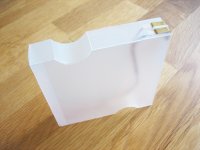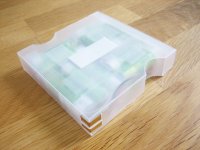Westinghouse
Well-known member
Glad to hear it's working out okay - I was a little worried that some tweaks I made to the external contact area on the battery might have messed up the spacing.
People always seem to be more interested in 3D printers when they see an example of how they can print replacement / repair parts instead of just trinkets & doodads. I'm sure everyone's been in a position where a broken part just isn't worth replacing, if indeed possible to replace.
The first thing I modeled up for printing was a tiny retaining ring for the shutter release of a vintage camera - the only other way to replace it would be to buy another whole camera, or machine a new piece.
People always seem to be more interested in 3D printers when they see an example of how they can print replacement / repair parts instead of just trinkets & doodads. I'm sure everyone's been in a position where a broken part just isn't worth replacing, if indeed possible to replace.
The first thing I modeled up for printing was a tiny retaining ring for the shutter release of a vintage camera - the only other way to replace it would be to buy another whole camera, or machine a new piece.



